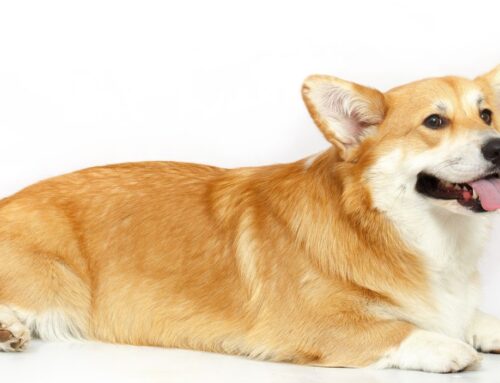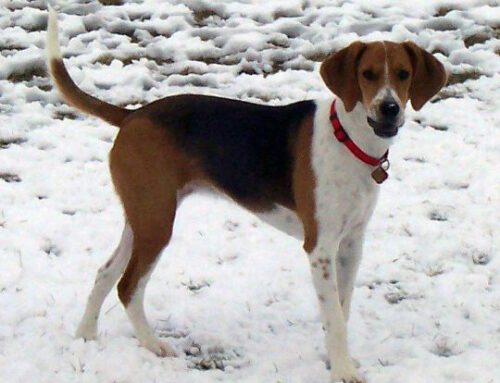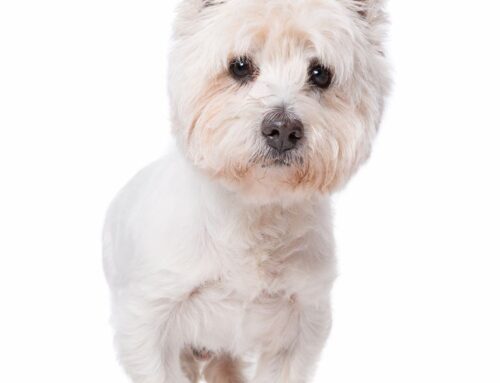Are you considering getting a new furry friend and considering a Maltese breed dog as a potential pet? If so, you are in for a treat. Maltese dogs are one of the most popular toy breeds as they are small, adorable and affectionate. They are also known for their playful personalities, which makes them a great choice for families with children. In this article, we will discuss the characteristics of Maltese dogs, their grooming needs, and their overall temperament to help you make an informed decision about whether this breed is a good fit for you and your family.
Toy
Malta
20-25 cm
1.4-3.6 kg
12-15 years
High
Moderate
History and Origin
The Maltese is a small breed of dog that is known for its long, silky white coat and its playful and affectionate personality. The breed has a long and fascinating history that dates back thousands of years, and it has been a beloved companion to people all over the world.
The exact origin of the Maltese is not known, but it is believed to have originated in the Mediterranean region, possibly on the island of Malta. The breed is thought to be descended from a small, white dog that was kept by the ancient Egyptians, and it is also believed to have been influenced by other small breeds from the Mediterranean, such as the Bichon Frise and the Havanese.
The Maltese has been known by many names throughout history, including the “Melitae Dog,” the “Roman Ladies’ Dog,” and the “Maltese Lion Dog.” The breed was highly prized by royalty and nobility throughout Europe, and it was often given as a gift to other rulers and dignitaries. In fact, it is said that the famous French queen Marie Antoinette had a Maltese named “Mimi” that she carried with her everywhere she went.
During the 19th century, the Maltese became a popular breed in England, and it was recognized by the Kennel Club in 1902. The breed was also introduced to the United States during this time, and it quickly became a favorite among dog lovers. Today, the Maltese is still a popular breed all over the world, and it is known for its beauty, intelligence, and loyalty.
One of the most distinctive features of the Maltese is its long, silky coat, which requires regular grooming to keep it looking its best. The breed is also known for its small size, with most Maltese weighing between 4 and 7 pounds. Despite its small size, however, the Maltese is a sturdy and energetic breed that loves to play and be active.
In addition to being a beloved companion, the Maltese has also been used for a variety of other purposes throughout history. The breed has been used as a watchdog, a ratter, and even as a performer in circuses and other entertainment venues. Today, the Maltese is primarily a companion dog, and it is known for its affectionate and playful

Size and Breed Category
The Maltese is a small breed of dog that is known for its long, silky white coat. They are classified as a toy breed, which means that they are one of the smallest breeds of dogs. In terms of size, they typically weigh between 1.8 and 3.6 kilograms and stand between 20 and 25 centimeters tall at the shoulder. Despite their small size, they are known for their lively and playful personalities, which make them popular pets for families and individuals alike.
In addition to their small size, the Maltese is also known for its distinctive appearance. They have a round head with a short muzzle and large, dark eyes. Their ears are long and droopy, and their tails are typically curled over their backs. Their coat is long and silky, and requires regular grooming to keep it looking its best. Despite their small size, they are known for their courage and loyalty, which make them excellent watchdogs. Overall, the Maltese is a charming and affectionate breed that is well-suited to life as a companion animal.
Fur Length and Colour
The fur of a Maltese is long and silky, with a texture that is soft to the touch. The fur is typically white in colour, although some Maltese may have slight variations in shade, such as ivory or cream. The fur is known for its ability to grow quite long, often reaching lengths of up to 10 inches. This length requires regular grooming to prevent matting and tangling, and many Maltese owners opt to keep their dog’s fur trimmed short for ease of maintenance. Despite the length of the fur, Maltese do not shed excessively, making them a good choice for those with allergies.
The Maltese coat is made up of a single layer of hair, rather than a double coat like many other breeds. This means that the fur is not as insulating as other breeds, and Maltese may require a sweater or coat in colder weather. The fur is also prone to staining, particularly around the eyes and mouth, and regular cleaning is necessary to keep the fur looking bright and white. Despite the high maintenance required for the fur, many Maltese owners find the silky texture and beautiful white colour to be worth the effort. The fur is a defining characteristic of the breed, and adds to the overall elegance and grace of the Maltese.
Termperament and Trainability
Maltese dogs are known for their lively and affectionate temperament. They are highly social animals and thrive on human interaction. They are also known to be very playful and enjoy games and activities that involve their owners. Maltese dogs are generally very adaptable and can adjust well to different living situations, making them a great choice for families with children or seniors looking for a companion. However, they can be prone to separation anxiety if left alone for long periods of time, so it is important to provide them with plenty of attention and stimulation.
In terms of trainability, Maltese dogs are generally intelligent and eager to please their owners. They respond well to positive reinforcement training methods, such as praise and treats, and can learn a variety of tricks and commands. However, they can also be stubborn at times and may require patience and consistency from their owners. It is important to start training early and to be firm but gentle with them. Maltese dogs can also be sensitive to harsh training methods, so it is important to avoid using physical punishment or yelling. With the right approach, Maltese dogs can be well-behaved and obedient pets.

Known Health Conditions
Maltese dogs are prone to certain health conditions that owners should be aware of. One of the most common issues is dental problems, such as tooth decay and gum disease. This is due to their small mouths and crowded teeth, which can make it difficult to clean properly. Regular dental check-ups and cleanings are important to prevent these issues from developing. Additionally, Maltese dogs are susceptible to eye problems, including cataracts and progressive retinal atrophy. These conditions can lead to vision loss and should be monitored by a veterinarian.
Another health concern for Maltese dogs is hypoglycemia, which is a condition where their blood sugar levels drop too low. This can be caused by stress, lack of food, or overexertion. Symptoms include lethargy, trembling, and seizures. Owners should ensure their Maltese has access to food and water throughout the day and monitor their energy levels. Additionally, Maltese dogs are prone to allergies, which can cause skin irritation and itching. This can be managed through a proper diet and medication prescribed by a veterinarian.

Openness to Strangers
Maltese people are known for their warm and welcoming nature towards strangers. They are a hospitable and friendly community, always ready to offer a helping hand to those in need. Maltese people are proud of their heritage and culture, and they are eager to share it with others. They are open-minded and curious, always interested in learning about different cultures and traditions. Maltese people are also known for their excellent communication skills, making it easy for them to connect with people from all walks of life. Whether you are a tourist or a new resident, you can expect to be welcomed with open arms by the Maltese people.
Maltese people are also known for their strong sense of community. They value their relationships with family, friends, and neighbours, and they are always willing to lend a helping hand. Maltese people are proud of their country and its history, and they are eager to share it with others. They are also known for their love of food and drink, and they enjoy sharing their culinary traditions with visitors. Maltese people are a vibrant and welcoming community, and they are always happy to make new friends. Whether you are looking for a new home or just passing through, you can expect to be welcomed with open arms by the Maltese people.
Playfulness Level
The Maltese is a highly playful dog that loves to have fun. They are known for their energetic and lively nature, and they are always up for a game or a run around the park. Their playful nature makes them a great companion for families with children, as they love to play and interact with people of all ages. Whether it’s playing fetch, chasing a ball, or simply running around, the Maltese is always ready for a good time. They are also very social dogs, and they love to be around other dogs and people. This makes them a great choice for families who want a dog that is both playful and sociable.
The Maltese is also a very intelligent dog, and they love to learn new things. They are quick learners and respond well to positive reinforcement training. This means that they are great candidates for agility training, obedience training, and other types of dog sports. Their playful nature and love of learning make them a great choice for people who want a dog that is both fun and trainable. Overall, the Maltese is a highly playful and energetic dog that loves to have fun and interact with people and other dogs. Their playful nature and intelligence make them a great choice for families who want a dog that is both fun and trainable.
Suitability as a Pet for Children
Maltese dogs have a gentle and affectionate nature, making them a great choice for families with children. They are highly adaptable and can thrive in both small apartments and larger homes. Their small size means they require minimal exercise, making them a good option for families who may not have the time or space for a larger, more active breed. Maltese dogs are also known for their intelligence and trainability, making them easy to teach basic commands and tricks. Additionally, their hypoallergenic coat makes them a good choice for families with allergies.

Exercise Needs
Maltese dogs require regular exercise to maintain their physical and mental health. As a small breed, they do not need as much exercise as larger breeds, but they still require daily walks and playtime. A brisk 20-30 minute walk each day is sufficient for most Maltese, but they also enjoy playing fetch or other games that allow them to run and burn off energy. It is important to note that Maltese dogs are prone to obesity, so it is crucial to monitor their food intake and ensure they are getting enough exercise to maintain a healthy weight.
In addition to physical exercise, Maltese dogs also benefit from mental stimulation. They are intelligent and curious dogs that enjoy learning new tricks and playing interactive games. Puzzle toys and training sessions can provide mental stimulation and help prevent boredom, which can lead to destructive behavior. Maltese dogs also enjoy spending time with their owners, so incorporating them into daily activities such as running errands or going for a car ride can provide both physical and mental stimulation. Overall, regular exercise and mental stimulation are essential for the health and happiness of Maltese dogs.

Suitability for a Multi-Pet Family
Maltese dogs have a reputation for being friendly and sociable with other pets. They are known to get along well with cats and other dogs, as long as they are introduced properly and given time to adjust to each other’s presence. It is important to supervise interactions between pets to ensure that they are safe and comfortable with each other. Additionally, early socialization and training can help to prevent any potential conflicts between pets.
Housing Requirements
Maltese people have specific housing requirements that are influenced by their Mediterranean climate. Due to the hot and dry summers, houses need to be designed to keep cool and provide shade. This is achieved through the use of thick walls, small windows, and courtyards. The courtyards are often used as outdoor living spaces and are shaded by trees or pergolas. Additionally, houses are often painted in light colors to reflect the sun’s rays and keep the interior cool. The use of air conditioning is also common, but it is often used sparingly due to the high cost of electricity. Overall, Maltese housing is designed to provide a comfortable living environment in a hot and dry climate.
Another important aspect of Maltese housing is the need for space efficiency. Due to the small size of the island, houses are often built close together and have limited outdoor space. As a result, many Maltese homes have multiple levels and utilize vertical space. Additionally, furniture and storage solutions are often designed to be compact and multi-functional. This allows for maximum use of the limited space available. Despite the small size of their homes, Maltese people take pride in their living spaces and often decorate them with traditional Maltese tiles and other decorative elements. Overall, Maltese housing is designed to make the most of limited space while still providing a comfortable and aesthetically pleasing living environment.
Summary
Maltese dogs make great pets for those who are looking for a loyal and affectionate companion. They are known for their playful and friendly nature, making them ideal for families with children. Maltese dogs are also relatively small in size, making them suitable for those who live in apartments or have limited space. They are easy to train and require minimal exercise, making them a great choice for those who have busy lifestyles. Overall, Maltese dogs are a great choice for anyone looking for a loving and low-maintenance pet.
Maltese Dog FAQS
Maltese dogs are generally good with children, but they are delicate and may not tolerate rough play.
Yes, Maltese dogs are hypoallergenic and produce less dander than other breeds.
Maltese dogs do not like to be left alone for long periods and may develop separation anxiety.
Maltese dogs are prone to dental issues, eye problems, and respiratory problems. Regular vet check-ups are recommended.
Maltese dogs do not shed much, but they do lose hair like all dogs.
Maltese dogs have a lifespan of 12 to 15 years.
Maltese dogs require moderate exercise, such as a daily walk or playtime in a fenced yard.
Maltese dogs require daily grooming to prevent matting and tangling of their long hair.
The average weight of a Maltese is between 1.8 to 3.6 kilograms.
Maltese dogs are affectionate, playful, and intelligent. They make great companions for those who can provide them with attention and care.






Leave A Comment